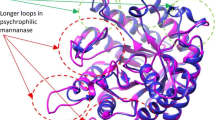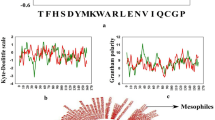Abstract.
Psychrophiles or cold-loving organisms successfully colonize cold environments of the Earth's biosphere. To cope with the reduction of chemical reaction rates induced by low temperatures, these organisms synthesize enzymes characterized by a high catalytic activity at low temperatures associated, however, with low thermal stability. Thanks to recent advances provided by X-ray crystallography, protein engineering and biophysical studies, we are beginning to understand the molecular adaptations responsible for these properties which appear to be relatively diverse. The emerging picture suggests that psychrophilic enzymes utilize an improved flexibility of the structures involved in the catalytic cycle, whereas other protein regions if not implicated in catalysis may or may not be subjected to genetic drift.
Similar content being viewed by others
Author information
Authors and Affiliations
Additional information
Received 21 June 2002; received after revision 9 September 2002; accepted 10 September 2002
Rights and permissions
About this article
Cite this article
Feller, G. Molecular adaptations to cold in psychrophilic enzymes. CMLS, Cell. Mol. Life Sci. 60, 648–662 (2003). https://doi.org/10.1007/s00018-003-2155-3
Issue Date:
DOI: https://doi.org/10.1007/s00018-003-2155-3




